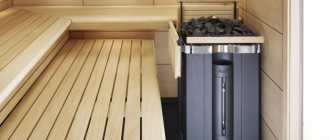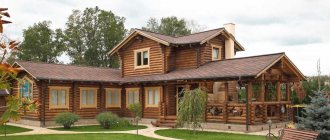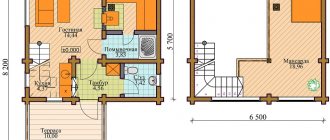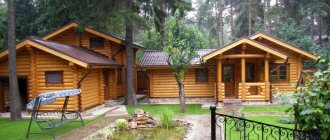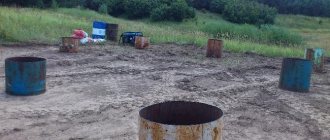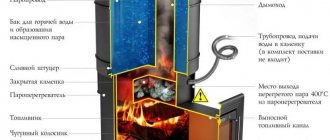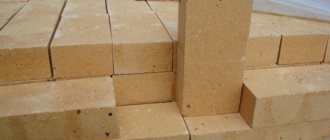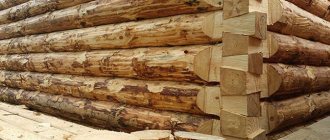Choosing a stove for a bath is not an easy question for a non-specialist. There are a lot of criteria and options. What materials should you prefer? What size should I buy (or make my own) structure? What fuel should I use?
These are just some of the aspects that you need to understand before purchasing a stove. The article discusses these and other points. Based on them and your own preferences, you can decide on the choice of a heating bath unit.
Figure 1. Stove in the bathhouse
Basic requirements for sauna stoves
Since a sauna heater is a structure that bears a significant functional load, it is subject to serious requirements:
- Greater heating capacity so that the air temperature under the ceiling reaches 95°C, and near the floor – at least 45°C. At the same time, the stove should allow you to change the temperature to the desired parameters and be an economical device.
- Compactness, thanks to which people can comfortably perform water procedures, move freely, and avoid accidentally touching hot surfaces.
- A sufficient volume of heated water in accordance with the number of members in the family and the average consumption per person is approximately 15 liters.
- High tightness of all elements so that gas and smoke do not penetrate into the premises.
- A thoughtful design to ensure long-term preservation of the heat that is accumulated by the stones.
Taking into account all the requirements, the choice of a finished stove or its construction is carried out with a creative approach to the process. Indeed, thanks to the efforts of engineers, heaters of different sizes and designs have been developed.
One of the stove size options Source kamin.website
Principle of operation
Depends on the type of equipment selected. In gas models, fuel (most often propane), with a controlled supply, is mixed with air in the required proportions and releases heat during combustion. Thanks to this, the stone base quickly accumulates, and water poured onto it turns into steam.
In electric ones, heating elements located in the inner casing heat up the stones (with which they are lined). The latter, in turn, give energy to the air entering and exiting through special ventilation ducts. As a result, the room temperature gradually increases.
In wood-burning stoves, the fuel burns and gives off the generated heat to the heater or mesh casing. Due to this interaction, particularly soft vaporization is observed.
Design requirements
All sauna stoves have two compartments in their structure: a firebox (bottom) and a heater (top). On the outside, the unit has either a metal casing (if it is not made of brick) or a stone cladding.
For modern and simply better sauna stoves they are as follows:
- manufactured from materials that can stably withstand heavy loads;
- general safety of the device, reducing the likelihood of fire, poisoning and other risks;
- balance between heating speed, cooling speed and humidity provision;
- efficiency in terms of fuel consumption;
- convenient sizes for use.
Types of construction
Some owners of private residential buildings believe that a heater is a stove made of stones. This is a wrong opinion because they are present in the design only in a certain place. Special stones are loaded into the stove so that they heat up, and when water hits them, steam is formed.
Heaters are usually built from bricks. Metal is also used. Steel options are sold ready-made. They are also manufactured according to individual drawings. Less time is spent on equipping bathhouses with metal models. Most often, the steel version is purchased ready-made and installed in the desired location.
On a note! The metal model is a sauna stove, the dimensions of which are usually smaller than the dimensions of a brick heater.
Options for metal and brick sauna stoves Source obustroeno.com
Pros and cons of a metal stove
A metal heater is made by welding. In its design, above the firebox, just like in a brick stove, there is a container for laying stones. Cast iron is not used in production, as it cracks when exposed to water. The advantages of a metal heating device include:
- a large number of ready-made options;
- low weight, usually not exceeding 50 kg;
- quick warm-up, which is usually completed in a maximum of one hour.
The disadvantages of a metal bath heating device include the possibility of installation in a building with an area of no more than 25 m2. The disadvantage is also the uneven heating of the bath, an increased level of fire hazard, and rapid cooling upon completion of the combustion process.
Advantages and disadvantages of a brick stove
A brick-built heater in a bathhouse is the most popular type of heating structure. It is chosen by all those who like to take a steam bath in accordance with Russian traditions.
Brick sauna stove Source ad-cd.net
See also: Catalog of companies that specialize in the design and installation of fireplaces and stoves
The advantages of brick construction include:
- high degree of fire safety;
- maintaining heat for a long time;
- easy operation, since there is no need to add firewood during washing;
- ability to heat a large sauna;
- no contact of the special stones used with combustion products;
- uniform heating of the room.
The disadvantages of such a heater include the large size and weight of the structure. Therefore, a brick foundation for the stove must be created, and the need arises for choosing the right location for the heating device. It is determined during the design of the bath.
The downside is also the pre-heating of the heating device, which can last, for example, 5 hours. In addition, brick structures are difficult to clean and construction cannot be completed without special skills. Therefore, most people turn to specialists for help.
Professionally installed brick stove Source blogspot.com
Additional selection criteria
There are two more parameters that are not paramount, but are also important when choosing a stove:
Ease of maintenance and operation
Be sure to look at how convenient it is to supply/load fuel into the selected model and remove residual combustion products from it.
Design and dimensions
As you know, the greater the mass of the coolant (which is often achieved by a spacious heater), the longer it retains heat. Therefore, if you choose the Russian steam room option, you need to calculate its area and foundation in advance (in the case of cast iron and brick options).
As for the external design, now on the market you can find a wide variety of stove shapes, in height and width, with or without a mesh for stones, as well as various lining options.
Stones
When choosing stones, follow the following rules:
- The breed is resistant to high temperatures and changes.
When used in a bathhouse, stones endure a heavy load: first they are heated to maximum temperature, then they are poured with water, which leads to uneven cooling. Not every breed is able to withstand this without losing its original appearance. The higher the heat resistance, the less likely it is to crack and chip. You can check the density yourself: by tapping the surface with a hammer or by placing it in cold water after heating it. If in both cases it has retained its integrity, you have a quality copy in your hands. The appearance of cracks indicates low heat resistance.
- Ability to retain heat for a long time.
Fast heating and long-term heat transfer are the main requirements of bathhouse attendants for stones. As a rule, they are distinguished by their large mass and homogeneous structure. High density and homogeneity of the rock is half the success in a steam room, since it quickly warms up and cools down for a long time, giving off heat; resistant to temperature changes.
- Dimensions.
When selecting the necessary species, do not forget that for each type of stove certain sizes are preferable. Stones should be selected based not on aesthetic principles, but on practical ones. Large stones from 7 to 15 cm are ideal for wood-burning stoves, but for electric stoves the best option is small stones from 5 to 7 cm.
It is not necessary to fill the heater with stones of the same type; more intense and useful steam can be achieved by mixing representatives of different properties. It is recommended to fill the lower level with pebbles, crimson quartz, and basalt. Peridotite and soapstone are perfect for the upper part. How to properly arrange the rocks in the heater?
Water heating tank
It is required for two reasons:
- so that you have something to wash yourself with while taking a warm shower;
- to raise the humidity level in the steam room and maintain it at the desired level.
It can be built-in (combined with a heater and firebox), mounted, connected to a heat exchanger or directly to the chimney, but in any form it increases efficiency, so its installation will definitely not be superfluous. The modern version is presented in the catalogue.
Stoves with open and closed heaters
Sauna stoves come with open and closed heaters. The first option is mainly used in small buildings. An open-type oven can heat a small steam room in a short period of time. However, after water gets on special stones, the heating device quickly cools.
Stoves with a closed heater are equipped with a steam door, which is located at the level of special stones. In such models, it is in the closed position when fuel combustion occurs. The door is opened if it is necessary to speed up the heating process of the room and increase the amount of steam in it. Models with a closed heater are always heated several hours before using the sauna. Such devices are able to retain heat for 2 days.
There are also stove options with both a closed and open heater. Source teplozhar.ru
Why are stones used?
The stone backfill serves as a heat accumulator and steam generator. The stones accumulate and release heat for a long time, preventing the steam room from cooling down, maintaining the working temperature in the room. When water comes into contact with hot stones, steam is generated - this makes it easy to regulate the air humidity in the steam room.
Depending on the stove model, the stones are placed inside the firebox, in a special box closed on three sides, or in a lattice basket. The volume of backfill is determined by the design of the heater and the area of the room - it may require from a couple of tens to a hundred or more kilograms of stones.
Stove location
The heating device is placed in the bathhouse in such a way that the structure can heat all rooms of the building. Usually the front wall of the heater with the combustion door and ash pan is located in the dressing room.
The choice of a finished device or the calculation of a stove for a bath during design is carried out taking into account the area of the steam room. If no more than 2 m2 is required to place a heating device, it is often installed in a specially created niche.
Heater stove in a specially prepared niche Source sdelaikamin.ru
This arrangement makes it possible not to expose the front wall of the device with the combustion door and ash pan to the dressing room. In this case, the stove will have to be heated from the steam room. This option is used when it is necessary to reduce heat losses and there is no need to heat other rooms in the bathhouse.
How to choose a gas stove for a sauna: key recommendations
- Focus on performance first. The equipment must fully service the area of the steam room and adjacent rooms. So take a look at the data sheet (usually the already mentioned 10 kW of power is enough).
- Pay attention to where the water heating tank is installed (if there is one at all). The best option is its location on the pipe, because it is more practical (and maximum efficiency), and ease of use also increases.
- Look at what gas the model you are interested in can run on: natural, liquefied or both. If the system is a combination system, make sure it has removable nozzles.
- Take a look at whether the kit includes a control device, and if so, what is it? If it is not there, you will have to purchase it separately.
Watch an educational video about how a gas burner works for a horn-type brick model:
Brick stove foundation
In order to safely use a heating brick structure in a bathhouse for a long time, a foundation for the stove is always created first. It must be carried out in the form of a separate structure if the weight of the heater is more than 700 kg. In this case, the distance between the foundation of the bathhouse and the stove should be at least 0.5 m.
To avoid mistakes, it is better to entrust the construction to a master from a specialized company. Typically, specialists perform work in the following sequence:
- Dig a pit with a depth below the freezing point of the soil, but not less than 50-70 cm.
When determining the width and length of the pit, the size of the sauna stove is taken into account. The pit around the perimeter is 10-15 cm wider than the heater. The increased size of the pit allows for free installation of the formwork.
Pit for the foundation of the stove Source sdelaikamin.ru
- Pour sand into the bottom of the hole.
The sand cushion is watered to compact the layer. Then sand is added so that its thickness at the bottom of the pit is 15 cm.
- Pour broken bricks onto a compacted sand layer. Stones are also used.
The second layer is also compacted. To eliminate the free space between the stones, sand is used, which is compacted with water. Typically the thickness of the 2nd compacted layer is 25 cm.
- Fill in crushed stone and compact the third layer.
- Install the formwork.
4 cm thick boards are used for the box. When determining its internal dimensions, the width and length of the furnace foundation are taken into account. The upper edge of the wooden box is placed at the level of the subfloor of the bathhouse. The formwork is securely fixed in the pit.
- Install the reinforcement frame inside the box.
The distance between it and the formwork walls is usually 5 cm.
- Concreting is carried out.
The poured solution is compacted using steel reinforcement. A wooden block is rarely used. The concrete surface that has not yet hardened is leveled along the edge of the formwork.
Poured and leveled foundation Source fishki.net
After the solution has cured, the formwork is removed. The concrete surface is covered with tar in two layers. Then the free space between the concreted area and the walls of the pit is filled with gravel or sand. Then the foundation for the sauna stove is covered with polyethylene. It is left in this state for a week.
Workmanship
When buying a steel heater for a bath, you should also pay attention to:
The quality of welds - this indicates the strength and reliability of the structure;
On the shape of the bottom of the combustion chamber - if there are bevels, this means that the walls will not burn out from the coal remaining after burning wood;
For fastening a glass door - if there is a frame around the perimeter of the glass, cracking is practically excluded.
Masonry stove-stove
As soon as the foundation for the stove in the bathhouse gains strength within 21 days, masonry work begins using smooth fired bricks without cracks or chips. It is recommended to give preference to ceramic refractory blocks when constructing the external contour of the heating device.
When installing the firebox, only Sh5 fireclay bricks are used. This material is, if necessary, cut to the required dimensions. It can cool down quickly. At the same time, fireclay does not accumulate heat. That is why it is not used for laying the stove itself.
On a note! To avoid mistakes, many stove makers first lay the bricks dry with small gaps. Professionals also use different types of special mortar for the construction of the combustion zone and external masonry.
The masonry process itself is a complex stage in the construction of a stove. To perform it correctly, a large number of subtleties must be observed. Therefore, the work is trusted only to experienced stove makers.
Popular manufacturers
You can purchase a finished heater only in a certain design. These can be steel or cast iron models, since brick heaters are built directly on site and are not found on sale.
Among the most famous manufacturers of cast iron stoves are the following companies:
Hephaestus
Etna
Inzhkomcenter VVD
Vesuvius
These are domestic manufacturers offering models with the optimal combination of price and performance characteristics.
Among the companies supplying steel furnaces to the market, the following should be highlighted:
Termofor
Teplodar
Ermak
Varvara
The stove models manufactured by these companies are durable and made of thick metal. They do not burn out for a long time and allow you to heat rooms quickly and efficiently.
As you can see, only domestic companies are listed. This was done deliberately, since these companies offer very high-quality, competitive products. At the same time, the cost of their stoves is significantly lower than that of imported analogues, which determines the choice of buyers.
Features of the firebox and ash pan
During the construction of the stove, it is important to correctly determine the size of the combustion zone, taking into account various nuances. Be sure to take into account the need to install a collector for heating water and the type of fuel used.
The depth of the firebox is determined individually. If this size is 80 cm, then 55 cm of this is used for loading standard length firewood, and 25 cm is used for the water heating system. The width of the combustion zone can be 40 cm, and the height – 35 cm. A firebox of such dimensions allows you to load 8-10 standard logs at a time.
Fuel combustion products are removed from the sauna stove through the ash pan. The blower also allows you to collect ash. In addition, air necessary for the combustion process enters the combustion zone through them. To regulate the rate of fuel combustion, an ash pan or a special valve is used. If it is necessary to quickly heat the bath rooms, it is recommended to completely open the air passage.
Useful properties of steam
It is impossible to imagine a real Russian bathhouse without steam. Steam expands skin pores and removes harmful toxins from the body. The skin becomes more elastic and firm.
Heat dilates blood vessels, stimulating metabolism. The human brain is freed from mental and emotional stress, bringing the entire body into a peaceful state.
The heat of a steam room is an excellent cure for joint disease. It was not for nothing that our ancestors loved going to the bathhouse, mercilessly whipping themselves there with brooms, and to get steam, you would need a sauna heater. Let's figure out how to choose a heater for a bath or make it yourself. Most often, a traditional wood stove is used, although an electric one can be installed.
Briefly about the main thing
Before calculating a stove for a bath, you need to decide on the type of structure. After all, it can be with an open or closed heater, completely metal or lined with refractory bricks. In this case, it is necessary to provide for high thermal performance, tightness and long-term heat retention by the stove.
Metal heaters are available for purchase in finished form. They weigh less than brick ovens. At the same time, steel structures heat up faster, but they heat the bath unevenly. Brick heaters are built on a foundation.
Regardless of the type, the stove in the bathhouse must provide heating to all rooms. Its design includes a firebox and an ash pan. Often the wall with their doors is located in the dressing room.
Ratings 0
Vaping method: selection according to parameters
Start with the simplest thing - think about who will take a steam bath and how often, or maybe even just wash. For professional use (when providing paid services) you will need one heating equipment, for constant relaxation among amateurs - another, for simple family gatherings on occasion - a third, for undemanding beginners - a fourth.
It’s also worth deciding what type of steam room to make. If it is Russian, then she needs a closed heater, made of brick or metal, but with a stone lining, and so that its vents are closed. Then it will be possible to easily control convection, that is, regulate heated air flows. If it is a Finnish sauna, then, as a rule, it is a steel stove with convection casings for heating the steam room as quickly as possible. Moreover, to soften hard radiation, such furnaces are lined with stone or a mesh casing.
Temperature/humidity ratio
In other words, microclimate. One piece of equipment can create real heat in a matter of minutes, but at the same time dry out the air. Another is to provide a soft and even gentle atmosphere, but not warm the room properly.
A stove for a Russian bath should produce up to 60°C at 55-60% humidity, a Finnish sauna requires 90°C and 15%, and a Turkish hammam requires up to 45°C and up to 100%, respectively.
Based on this, the area of infrared radiation when heating a material becomes especially important: the larger it is, the drier the air, and vice versa.
Top 2. Vesuvius LEGEND
Rating (2021): 4.79
The most reliable stove A completely cast iron heater that is not afraid of the highest temperatures. The most reliable and durable design.
- Characteristics
Average price: 43,500 rub.
- Country Russia
- Heated volume (cub.m): 18
- Dimensions (D/W/H): 70/56/69 cm
- Construction: floor
- Weight (kg): 90
Cast iron is a derivative of iron. The material is durable and has good thermal conductivity. It retains the accumulated heat for a long time, so it is ideal for the production of stoves. But it has disadvantages, such as high cost, heavy weight and low aesthetic appeal. It is because of these shortcomings that cast iron is increasingly being replaced by ordinary metal and steel. But there are stoves that are still produced using old technologies. One of them is now in front of us. A real work of art by blacksmiths. The vat is made of cast iron, so it will never burn out or be warped by high temperatures. True, and the price is appropriate. But such a stove is unlikely to have to be changed even after ten years.
Advantages and disadvantages
- Cast iron boiler
- Openwork forged firebox
- High strength
- Small ash box
- High price
Top 3. TMF Skoroparka 2012 Inox Lumina
Rating (2021): 4.55
Convenient maintenance The design of the oven allows easy access to all its internal parts, so there will be no problems with cleaning and maintenance.
- Characteristics
Average price: 24,500 rub.
- Heated volume (cub.m): 18
- Dimensions (D/W/H): 92/51/71 cm
- Construction: floor
- Weight (kg): 76
Any heater, especially one powered by wood, will sooner or later require maintenance. It is necessary to clean and maintain the device in order for it to work for a long time. This is often not easy to do, but not in this case. Here the manufacturer took care of convenience, making the design such that you can easily access all internal parts. This is a heater, but a closed type. However, it can be used without the top cover. The body is collapsible, divided into three parts. The firebox is removed separately, and a spacious box is used to receive ash.
Advantages and disadvantages
- Easy maintenance
- Spacious ash drawer
- Can be used as a closed heater
- Very large firebox window
- Not the highest performance for its size
- Difficult manipulations when changing the burner
Top 1. Harvia M2
Rating (2021): 4.87
Best value for money High-quality closed-type heater with a long service life and easy operation.
- Characteristics
Average price: 24,800 rub.
- Country: Finland
- Heated volume (cub.m): 13
- Dimensions (D/W/H): 71/39/43 cm
- Construction: floor
- Weight (kg): 54
In the modern world, everything is possible. Even a Russian sauna with a Finnish heater. Harvia M2 is the best stove in terms of price-quality ratio. It is very reliable and will last for many years, which more than compensates for its not-so-low price tag. The design is thought out to the smallest detail, although some users have problems with the ash pan. However, this is a matter of habit and does not affect the technical parameters in any way. Otherwise, an excellent iron stove with a wall thickness of up to 8 millimeters. The firebox is equipped with a panoramic door, so you can also enjoy the beauty of an open flame. And the rear exit of the chimney will not interfere with the supply of steam, spraying the stones.
Advantages and disadvantages
- Robust design
- Thoughtful form factor
- Laconic but stylish design
- Rear chimney outlet
- Not the most convenient ash drawer
- Relatively high price
See also:
- 12 best brands of sauna stoves
to the beginning of the rating
